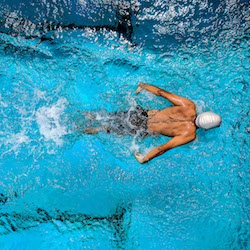Swimmer Michael Phelps’ continued dominance at the 2016 Rio de Janeiro Olympics was accompanied by worldwide awareness of cupping. Cupping therapy has re-emerged as a potential approach to boost post-exercise metabolic recovery, reduce pain, and improve range of motion by increasing local microcirculation. But what does science tell us about the effectiveness or safety of cupping?
In partnership with Today’s Practitioner and The Journal of Alternative and Complementary Medicine (JACM), this new systematic review examines the results of eleven clinical trials encompassing nearly 500 participants. The article is available free on JACM website until March 13, 2018.
What is the Science of Cupping Therapy?
Romy Lauche, University of Technology (Sydney, Australia) and colleagues from Endeavour College of Natural Health (Fortitude Valley, Australia) and University of Duisburg-Essen (Germany) coauthored the article titled “Effects of Cupping Therapy in Amateur and Professional Athletes — Systematic Review of Randomized Controlled Trials.” Despite some reports of benefits, including some related to reduced pain and disability, the authors found the reports uneven and found a high risk of bias in the trial designs. They therefore determined that no conclusive recommendations for or against the value of cupping in sports performance can be made until further trials are carried out.
Co-author Lauche states: “Cupping therapy is a classic example in which research lags behind clinical practice. We are confident that this review will point out the need for and encourage further high-quality research of cupping, a therapy which has been around for millennia.”
“This systematic review by Lauche and her international team squarely place this therapy in evidence limbo,” says JACM Editor-in-Chief John Weeks, Seattle, WA. He adds: “There is evidence here for advocates, evidence for detractors, and evidence for researchers — that we need more of it!”
Source: Rhianna Bridgett, Petra Klose, Rob Duffield, Suni Mydock, and Romy Lauche.The Journal of Alternative and Complementary Medicine.Mar 2018.ahead of printhttp://doi.org/10.1089/acm.2017.0191
Read





